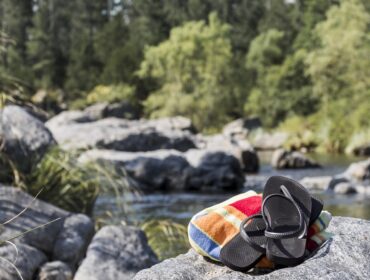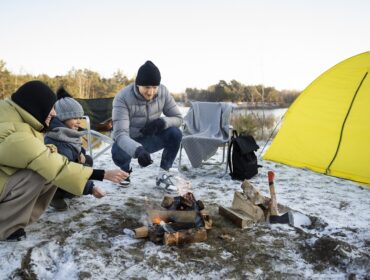Introduction
Every outdoor enthusiast knows the joy of a new tent, a warm sleeping bag, or a sturdy backpack. But what happens when that gear wears out? Too often, it ends up in landfills, contributing to the growing global waste crisis. Outdoor equipment, with its synthetic fabrics, waterproof coatings, and metal frames, can be particularly difficult to dispose of responsibly.
In 2025, however, the outdoor industry is rethinking its approach. More and more brands are designing with the circular economy in mind — a system where gear isn’t made, used, and tossed, but instead reused, repaired, recycled, or even reborn into new products. For campers, hikers, and explorers who love nature, circular design offers a way to enjoy the outdoors while protecting it. This blog takes a closer look at what circular camping means, how brands are making it possible, and how you can be part of the movement with sustainable gear.
What Is Circular Camping?
Traditional outdoor gear follows a linear path: produce → use → discard. Circular camping flips that model. Instead of treating equipment as disposable, brands now focus on:
-
Durability: Making gear that lasts longer in the first place.
-
Repairability: Designing items so they can be easily fixed.
-
Recyclability: Using materials that can be broken down and reused.
-
Reuse models: Creating ways for gear to live multiple lives, from second-hand markets to rentals.
For outdoor lovers, circular camping isn’t just about buying eco-friendly products. It’s a mindset: choosing equipment that reduces waste, conserves resources, and keeps adventures sustainable.
Materials That Make the Cycle Work
Circular design starts with the raw ingredients. In 2025, material innovation is leading the charge:
-
Recycled Polyester and Nylon
Many leading brands now use fabric spun from post-consumer waste, like plastic bottles or discarded fishing nets. This reduces demand for virgin petroleum-based plastics. Packs from Osprey and Deuter are prime examples, built tough but with recycled materials. -
Biodegradable Coatings
Old waterproofing chemicals, like PFCs, were harmful to waterways. New biodegradable water-repellent finishes protect both you and the environment. -
Self-Healing Textiles
Still emerging, but some fabrics are designed to “heal” small rips and punctures when exposed to heat — meaning less need to replace items after a small mishap.
Together, these innovations mean your gear isn’t just performing in the field — it’s also reducing harm once it reaches the end of its lifecycle.
Gear Designed for Disassembly
One major problem with outdoor gear is that it’s a mash-up of parts: zippers, mesh, metal, coatings, and fabrics. This makes recycling almost impossible.
Now, more products are built to come apart. Some backpacks feature removable frames, buckles, and hip belts that can be replaced individually. Tents are shifting toward modular designs where poles, flysheets, and fabrics can be swapped out rather than tossing the whole thing when one part breaks.
By designing for disassembly, brands ensure that gear can either be repaired or recycled more effectively at the end of its life. For campers, that means less frustration and more value from every purchase.
Trade-In & Buy-Back Programs
Another way brands keep gear in circulation is through trade-in and resale programs.
-
Patagonia’s Worn Wear repairs and resells used clothing.
-
The North Face Renewed gives old apparel a second life.
-
Arc’teryx ReBird offers refurbished jackets and packs.
Instead of letting your gear collect dust or head for the dump, these programs give you store credit and ensure products stay useful for longer. SunnySports customers can also benefit by choosing brands that actively support resale and refurbishment.
Rental & Shared Gear Models
Do you really need to own everything? For casual campers, beginners, or travelers with limited storage, rentals make sense. Renting reduces waste by ensuring that one tent, sleeping bag, or stove serves dozens of people across its lifetime.
This model is growing rapidly in 2025, especially for high-cost or seasonal gear like mountaineering tents, paddleboards, or snow gear. Rentals allow you to try before you buy, reduce clutter at home, and take part in the circular economy without a big upfront investment.
The Future of Circular Camping
What’s next for circular camping? Experts predict:
-
Compostable Gear: Fully biodegradable tents and clothing.
-
Gear-as-a-Service: Subscriptions where gear is delivered, used, returned, and refurbished.
-
Smart Recycling Tags: QR codes on products that guide owners on how to recycle them.
The outdoor industry is moving fast, and campers are already seeing the benefits: lighter environmental impact, more value from gear, and a stronger connection to nature.
Conclusion
Circular camping isn’t just a trend — it’s a new way of thinking about outdoor adventure. By choosing durable, repairable, and recyclable gear, you help cut down on waste and keep nature pristine for future explorers.
SunnySports offers a range of products from forward-thinking brands that are building sustainability into their DNA. Whether you’re replacing a backpack, upgrading your tent, or just starting your camping journey, you can make choices that support both your adventures and the planet.
FAQs: Circular Camping
What is circular gear?
Circular gear is designed to last longer, be repaired, and eventually recycled instead of ending up in landfills.
Is recycled gear as durable as new?
Yes. Advances in fabric technology mean recycled materials perform just as well as virgin ones. Many top brands guarantee durability.
Can old tents and packs really be recycled?
If designed for disassembly, yes. More companies are building products that can be broken down and recycled.
How do I know if gear is sustainably made?
Look for certifications (like bluesign® or Global Recycled Standard), or choose products from brands with transparent sustainability programs.
Is rental gear safe and reliable?
Yes. Rental companies inspect, clean, and maintain gear between uses, ensuring safety and performance.





